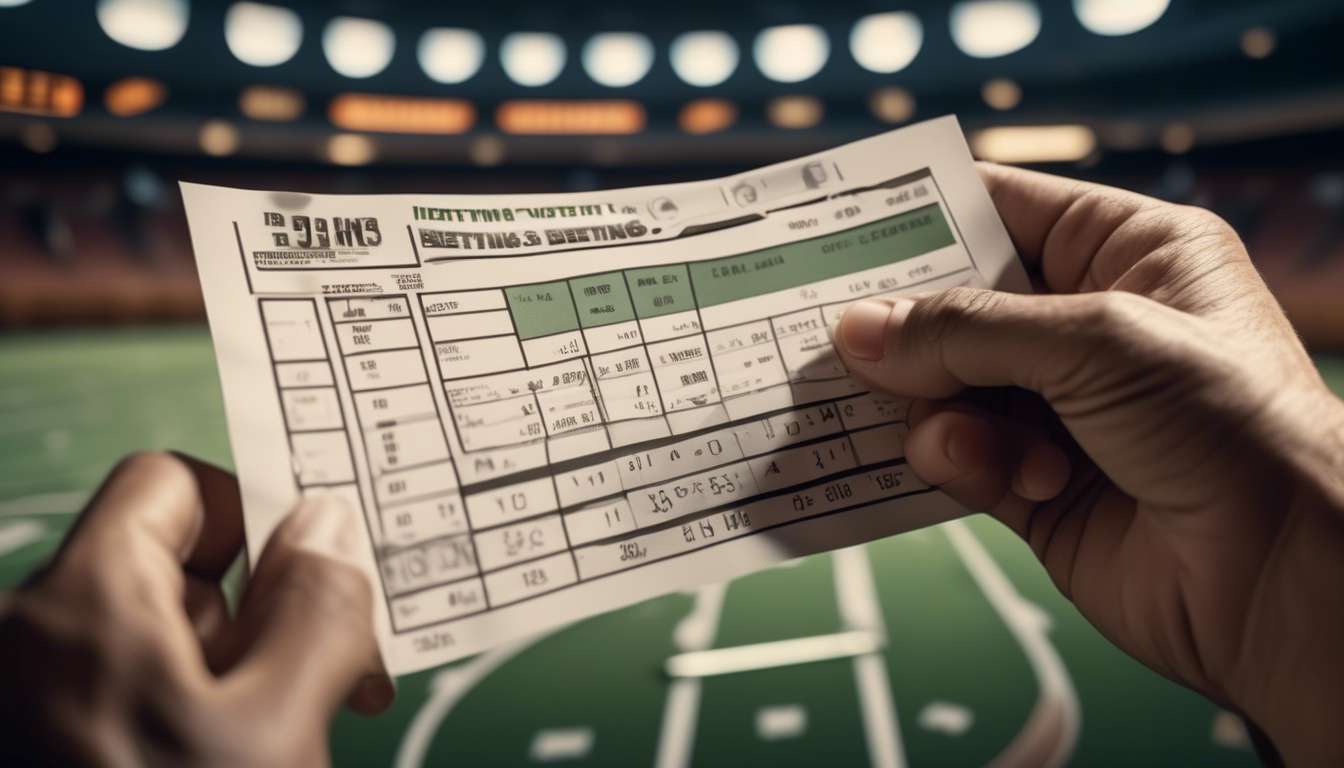When we dive into the world of sports betting, one of the first puzzles we encounter is the concept of betting odds. These numbers, often displayed in seemingly incomprehensible formats, hold the key to understanding potential winnings and risks.
Betting odds serve as a reflection of probability, conveying the likelihood of a particular outcome in a sporting event. They guide us in assessing the risk and potential reward of placing a bet. Whether we are looking at fractional, decimal, or moneyline odds, each format offers its unique perspective on the game.
By understanding these odds, we not only enhance our betting strategy but also enrich our enjoyment of the sports we love. Together, let’s unravel the mysteries behind these numbers and explore how they influence our betting experiences.
Types of Betting Odds
In sports betting, there are three main types of odds: fractional, decimal, and moneyline. Understanding these odds helps us feel more connected and confident in our wagers. Each type presents probability differently but serves the same purpose—helping us gauge potential returns on our bets.
Fractional Odds
- Commonly used in the UK.
- Show the ratio of profit to the stake.
Decimal Odds
- Popular in Europe and Canada.
- Represent the total payout, including the original stake.
Moneyline Odds
- Favored in the US.
- Display either positive or negative numbers indicating how much we need to bet to win a certain amount.
Sportsbooks use these odds to represent the probability of an event occurring. By understanding the odds, we’re better equipped to make informed decisions.
As a community of enthusiasts, we can share insights and strategies, enhancing our collective experience in sports betting.
Probability and Odds Conversion
Converting Between Different Types of Odds and Probabilities
Understanding how to convert between different types of odds and their corresponding probabilities is essential for making smarter betting decisions. Sportsbooks present odds in various formats, including decimal, fractional, and moneyline. Each format provides a different perspective on the likelihood of a bet occurring.
Conversion Formulas
-
Decimal Odds to Probability:
- Formula: ( \text{Probability} = \left(\frac{1}{\text{Decimal Odds}}\right) \times 100 )
-
Fractional Odds to Probability:
- Steps:
- Add the numerator to the denominator.
- Divide the denominator by the sum.
- Multiply by 100 to get a percentage.
- Steps:
-
Moneyline Odds to Probability:
- Positive Moneyline Odds:
- Formula: ( \text{Probability} = \left(\frac{100}{\text{Moneyline Odds} + 100}\right) \times 100 )
- Negative Moneyline Odds:
- Formula: ( \text{Probability} = \left(\frac{-\text{Moneyline Odds}}{-\text{Moneyline Odds} + 100}\right) \times 100 )
- Positive Moneyline Odds:
Benefits of Mastering Odds Conversion
By mastering these conversions, we empower ourselves to:
- Make informed choices in our betting strategies.
- Strengthen our connection with fellow bettors and sportsbooks.
- Feel more confident in our understanding of the sports betting landscape.
Understanding these conversions not only enhances our decision-making but also helps us integrate more effectively into the sports betting community.
Calculating Potential Winnings
To calculate potential winnings, it is essential to understand how different odds formats influence the payout of a successful bet. Odds not only reflect the probability of an event but also guide us on how much we can win if our bet is successful. In the world of sports betting, sportsbooks present odds in various formats: fractional, decimal, and American. Each format provides unique insights into potential returns.
Fractional Odds:
- Determine winnings by multiplying your stake by the fraction.
Decimal Odds:
- Multiply your stake by the decimal number for a straightforward calculation.
American Odds:
- Positive odds indicate how much profit you’d make on a $100 wager.
- Negative odds show how much you need to bet to win $100.
By understanding these formats, we join a community of informed bettors, ready to engage with sportsbooks confidently.
Let’s calculate wisely and enjoy the thrill of sports betting together!
Understanding Implied Probability
Implied Probability: Understanding the Likelihood
Implied probability helps us understand the likelihood of an event as suggested by the odds. In the world of sports betting, it translates odds into a percentage that indicates how likely a particular outcome is. This concept is crucial, as it allows us to compare our own predictions with those of the sportsbooks.
Calculating Implied Probability
To calculate implied probability, we convert the odds into a percentage. Here’s how:
-
Decimal Odds: Use the formula: ( \frac{1}{\text{odds}} \times 100 ).
-
For example, if the odds are 2.50, the implied probability is 40% ((\frac{1}{2.50} \times 100)).
-
This means the sportsbook believes there’s a 40% chance of the event happening.
-
Benefits of Understanding Implied Probability
Understanding implied probability makes us informed bettors, enabling us to make smarter decisions. By interpreting odds this way, we connect with the community of bettors who share our passion for sports.
Impact of Odds on Betting Strategy
Betting odds profoundly shape our strategies by influencing how we assess risk and potential rewards. When we look at the odds provided by sportsbooks, we’re not just seeing numbers; we’re gauging probability and deciding if the risk aligns with our predictions. Odds tell us the likelihood of an event happening, and understanding them helps us become part of a savvy community that makes informed decisions.
Risk and Reward Evaluation:
- Not every bet is created equal.
- Higher odds often mean higher risk, but they also offer the potential for greater rewards.
- We evaluate these odds to decide if the potential payout justifies the risk.
By doing so, we align ourselves with those who understand the game beyond face value.
Strategy and Value Bets:
- Sportsbooks set odds to reflect probabilities.
- Our strategy lies in identifying discrepancies where odds don’t seem to match our analysis of probability.
- Finding these value bets connects us with others who relish the strategic challenge.
Comparing Different Odds Formats
Let’s dive into the various odds formats that offer unique perspectives on betting probabilities. As a community passionate about sports betting, understanding these formats helps us connect and make informed decisions. The three main odds formats we encounter are:
-
Decimal Odds
- Widely used in Europe.
- Present a straightforward approach by showing the total payout, including the original stake.
- Example: Odds of 2.50 mean we win $2.50 for every dollar wagered.
-
Fractional Odds
- Common in the UK.
- Highlight potential profit relative to the stake.
- Example: Odds of 5/2 suggest we earn $5 for every $2 bet.
-
Moneyline Odds
- Favored by American sportsbooks.
- Focus on the amount needed to bet for a $100 win or the profit from a $100 stake.
- Positive and negative numbers indicate favorites and underdogs, respectively.
By comparing these formats, we enhance our understanding of probabilities and improve our sports betting experience. We belong to a knowledgeable community sharing insights and excitement.
Reading Odds in Sportsbooks
When we step into the world of sportsbooks, understanding how to read odds becomes essential for making informed betting choices. Odds are not just numbers; they represent the probability of an event occurring and help us gauge potential returns on our wagers. As a community, we want to feel confident and connected, knowing we’re making savvy decisions together.
Let’s dive into how sportsbooks present these odds. Typically, we see three formats: American, Decimal, and Fractional. Each format gives us a different perspective on probability and potential payouts.
-
American Odds:
- A favorite is shown with a negative number, indicating how much we need to bet to win $100.
- An underdog is shown with a positive number, indicating the profit on a $100 bet.
-
Decimal Odds: Common in Europe, these are straightforward and show total returns per unit staked.
-
Fractional Odds: Often seen in the UK, these display potential profit relative to the stake.
By understanding these formats, we enhance our shared experience and make smarter bets.
Factors Influencing Odds Movement
Understanding the factors that cause odds to shift is essential for making timely and informed bets. Our community benefits greatly from staying informed about these influences.
Key Factors Influencing Odds:
-
Team News:
- Injuries
- Suspensions
- Changes in lineup
These elements can alter the probability of outcomes, prompting sportsbooks to adjust odds accordingly.
-
Weather Conditions:
- Plays a significant role in outdoor sports.
- Rain or wind can impact performance, leading to shifts in odds.
-
Public Perception:
- When a large number of bettors favor one side, sportsbooks might adjust odds to balance the action and minimize potential losses.
- Expert opinions or media narratives can sway public sentiment, contributing to these shifts.
-
Sharp Bettors:
- Known for their expertise, when they place large bets, sportsbooks often react by adjusting odds to more accurately reflect the perceived probability.
Staying Informed:
- Keeping up with these factors ensures we’re always a step ahead in our betting strategies.
- Staying connected and informed is crucial for thriving in betting.
Conclusion
In conclusion, understanding betting odds in sports is crucial for making informed decisions when placing bets.
By grasping the following concepts, you can enhance your betting strategy:
-
Types of Odds: Familiarize yourself with fractional, decimal, and moneyline odds.
-
Calculating Potential Winnings: Know how to calculate your potential returns based on the odds provided.
-
Implied Probability: Understand how to convert odds into implied probability to gauge the likelihood of an event.
Additional Tips:
-
Compare different odds formats to ensure you are getting the best value.
-
Stay updated on factors influencing odds movement, such as team news, injuries, and market trends.
By following these guidelines, you can maximize your chances of success in the world of sports betting.
Happy betting!




